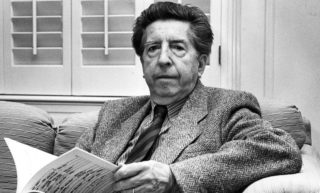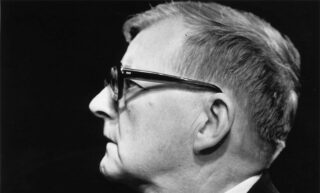The ominous
Sinfonieorchester Basel
30 and 31 January 2019
Gabriela Montero, piano
Michal Nesterowicz, conductor
Michail Glinka - Overture Ruslan and Lyudmila
Pyotr Ilyich Tchaikovsky - Concert for piano and orchestra No. 1
Dmitri Shostakovich - Symphony No. 9
This month’s all-Russian program starts with the overture to the opera Ruslan and Ludmilla by composer Michael Glinka (1804 – 1857). The libretto recounts the abduction of beautiful Ludmilla by the evil wizard Chernomor. The opera is known for its use of the “whole tone scale”, consisting of seven (instead of eight) tones, the interval between all consecutive notes being a whole tone. The scale is often used to depict “the ominous”, something the overture, despite its upbeat nature, certainly does. In Russia, the scale is still called Chernomor’s scale.
Shostakovich’s life (1906 – 1975) in Soviet times was definitely marked by the ominous. Under communist rule, and even more so under Stalin’s rule, the composer was under constant scrutiny by the authorities. Individual expression and creativity, as a composer, was subordinate to one’s obligation to support and spread the blessings of the revolution by means of one’s compositions. If you failed to do so in the eyes of Stalin and his henchmen, deportation, imprisonment or even death could be the price. In that sense, Shostakovich was relatively lucky as none of this ever happened to him. On the other hand, his work was twice officially denounced, resulting in the withdrawal of privileges, the banning of his works and the demand for a public apology for writing “formalistic” music rather than proletarian tunes for the masses. Meanwhile he lived under the continual fear of worse.
The second denunciation came shortly after the premiere of his ninth symphony (1944-1945). Together with his seventh and eighth symphony, Shostakovich’s so-called war symphonies, they have been composed during the Second World War. After initial success the seventh was considered unpersuasive – in the face of the beleaguering of Leningrad (now St. Petersburg) – and the eighth too somber – given the advancements of Russia’s Red Army. The ninth was deemed too light and festive where Stalin had expected something with victorious power.
Although the first movement indeed has a light character reminiscent of Haydn or Prokofiev’s first symphony, the second movement is rather melancholic. The last three movements, full of wit and humor, are played without interruption and end in a joyous can-can. Based on two quotations (from Beethoven’s nineth and Mahler’s nineth) Leonard Bernstein, whose hundredth birthday is commemorated this season, argues that Shostakovich’s main purpose of the symphony was to prove that he wasn’t intimidated by Beethoven and Mahler’s achievement of composing nine symphonies. Although the symphony was originally conceived with chorus – a setup that it would have shared with the ninth of his great predecessors – there are several other composers, notably Bruckner, Schubert and Dvorak, who matched Beethoven’s output, making Bernstein’s case not fully convincing.
Tchaikovsky’s first Piano Concerto (1874-1875), infused with Ukranian, Russian and French folk melodies and bridging the overture and the symphony (also chronologically), guarantees an evening of warm-blooded Slavic listening pleasure.
These English program notes have been published in the magazine (No. 5, 2018/2019) of the Sinfonieorchester Basel.








Comments